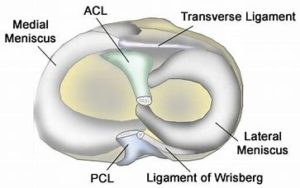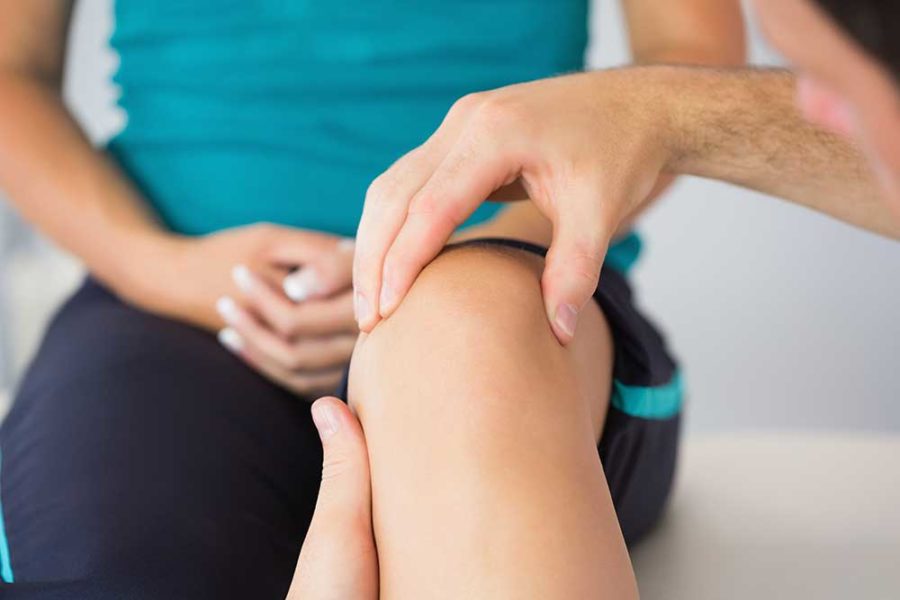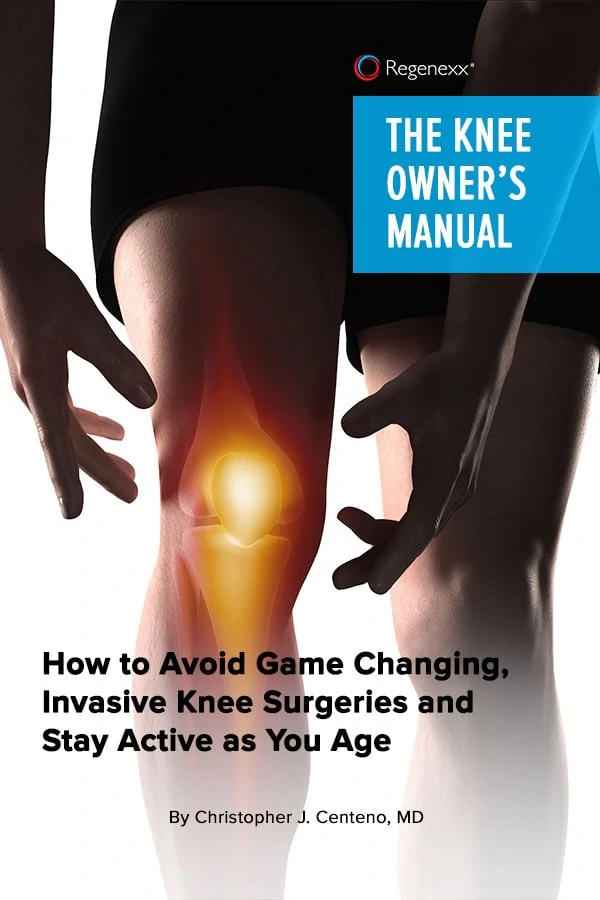Meniscus surgery is a widely performed surgery for meniscus tears with 34,966 performed in 2015 (1). What is a knee meniscus? What is meniscus surgery? What can I expect after arthroscopic knee surgery? Why is my knee popping after meniscus surgery? Let’s dig in.

What is a Knee Meniscus?
The meniscus is a figure-eight fibrocartilage that acts as a shock absorber between your thigh and shin bones. There are two menisci per knee, one on the inside of the knee (medial) and one on the outside (lateral).
What is Torn Meniscus Surgery?
The clinical significance of a meniscus tear was discussed in a previous blog. Torn meniscus surgery takes one of two forms. The first is repair by suturing the two edges of the torn meniscus together. The second option is a partial meniscectomy where a portion of the torn meniscus is cut out. The majority of meniscus surgeries are partial meniscectomies. This is important as discussed below.

What Can I Expect After Arthroscopic Knee Surgery For a Torn Meniscus?
Your knee will be swollen and may be painful. A knee brace is common and some patients require crutches or walkers for several days after the surgery. Physical therapy is important and focuses on strengthening leg muscles and improving range of motion.
Want to Get Back to What You Love, Without Surgery and Medication?
Why Is My Knee Popping After Meniscus Surgery
Meniscus surgery involves inserting a camera and operating tools into the knee joint and filling the joint with fluid to visualize the joint and the meniscus. There are many causes of knee popping after meniscus surgery which include:
Fluid Accumulation
Retained fluid from the surgery can cause knee popping.
Scar Tissue
Knee surgery causes tissue injury which may scar and lead to popping
Swelling and Stretching of Knee Tendons and Ligaments
Surgery can cause swelling and stretching of knee tendons and ligaments which can alter the way in which they track across boney surfaces causing popping.
Weakened Leg Muscles
Injury followed by surgery can cause weakness in leg muscles which can cause knee popping. Symptoms typically improve with physical therapy.
Changes in Patellar Tracking
The knee cap moves up and down a boney groove. If muscles are weakened or tendons are swollen, the tracking of the knee cap can be compromised leading to popping.
Calcium Deposits
Surgery can cause inflammation and injury to knee tissue which in turn can trigger the formation of calcium deposits. Calcium deposits can impair normal tendon and ligament function leading to popping. Calcium accumulation in the cartilage after meniscectomy is called chondrocalcinosis. In one study it occurred in 20% of the patients who underwent meniscectomy (2).
Snapping of the Tendons
Swollen and stretched tendons after knee surgery can cause popping (3).
Unstable Meniscus
Removal of a portion of the meniscus can alter the stability of the meniscus. An unstable or hypermobile meniscus can lead to popping (4).
Underlying Knee Arthritis
Meniscus surgery changes the biomechanics of the knee as a result of changing the size of the meniscus. As the cartilage wears down the joint may move in such a way that the knee pops (5).
Inflammed and Thickened Plica
The synovial membrane is the inside lining of the knee capsule. A fold in this lining is called a plica which can cause popping and knee pain. Arthroscopy is sometimes used to remove this fold if conservative therapy and physical therapy fail (6).
Can You Damage Your Knee After Meniscus Surgery?
Yes! The knee meniscus functions as an important shock absorber. Cutting out a portion of this important shock absorber predisposes the knee to additional injury. Why? Meniscectomy reduces the shock absorber size, changes the mechanics of the knee and creates instability. Meniscus surgery has important long-term consequences.
- Meniscus surgery predisposes the joint to early-onset arthritis (7)
- Patients who undergo meniscectomy are 2 1/2 times more likely to get a knee replacement at 5 years compared to patients who underwent PT (8)
- Recurrent meniscus tears. In one study, patients who underwent treatment of lateral meniscus tears had a 59% rate of recurrent meniscus tears at 8 years (9)
To better understand meniscus surgery and the longterm consequences please click on the video below.
Alternatives to Knee Meniscus Surgery
At the Centeno Schultz Clinic, we have been treating meniscus tears for the last 14 years with both platelets and bone marrow stem cells. PRP injected into chronic meniscus tears has been demonstrated to decrease pain scores and increase function scores when compared to controls (10). Bone marrow stem cells have demonstrated regeneration for meniscus tears in a time-dependent manner (11). At the Centeno-Schultz Clinic, PRP and bone marrow stem cells are injected precisely into the damaged or torn area of the meniscus using ultrasound or x-ray guidance. This is not a procedure that your orthopedic surgeon, chiropractor or physician assistant can perform. To better understand the procedure please click on a video below.
In Conclusion
The knee meniscus is an important shock absorber. Surgical removal of the injured meniscus is called a partial meniscectomy and can be associated with popping. Knee popping after meniscus surgery can occur due to fluid accumulation, scar tissue, swelling and stretching of the tendon and ligaments, weakened leg muscles, changes in patellar tracking, underlying knee arthritis, unstable meniscus, and inflamed plica. Meniscectomy destabilizes the knee, predisposes patients to early-onset arthritis and is associated with high rate of recurrent meniscus tears. PRP and stem cell treatments are viable non-surgical options for symptomatic meniscus tears. Unlike meniscectomy, PRP and stem cell injections do not change the size or shape of the meniscus or stability of the knee.
1. Hisako Katano, Hideyuki Koga, Nobutaka Ozeki, et al. Trends in isolated meniscus repair and meniscectomy in Japan, 2011–2016. Journal of Orthopaedic Science. Volume 23, issue 4, July 2018, Pages 676-681. doi.org/10.1016/j.jos.2018.04.003
2.Doherty M, Watt I, Dieppe PA. Localized chondrocalcinosis in post-meniscectomy knees. Lancet. 1982;1(8283):1207-10.doi.org/10.1016/s0140-6736(82)92336-4
3.Cooper DE. Snapping popliteus tendon syndrome. A cause of mechanical knee popping in athletes. Am J Sports Med. 1999;27(5):671-4. DOI: 10.1177/03635465990270052201
4.Song SJ, Park CH, Liang H, Kim SJ. Noise around the Knee. Clin Orthop Surg. 2018;10(1):1-8.doi: 10.4055/cios.2018.10.1.1.
5. Schiphof D, van Middelkoop M, de Klerk BM, et al. Crepitus is a first indication of patellofemoral osteoarthritis (and not of tibiofemoral osteoarthritis). Osteoarthr Cartil. 2014;22(5):631-8.DOI: 10.1016/j.joca.2014.02.008
5. Sihvonen R, Paavola M, Malmivaara A, et al. Arthroscopic partial meniscectomy versus placebo surgery for a degenerative meniscus tear: a 2-year follow-up of the randomised controlled trial. Ann Rheum Dis. 2018;77(2):188-95.DOI: 10.1136/annrheumdis-2017-211172.
6.Dupont JY. Synovial plicae of the knee. Controversies and review. Clin Sports Med. 1997;16(1):87-122.DOI: 10.1016/s0278-5919(05)70009-0.
7.https://www.thieme-connect.de/products/ejournals/abstract/10.1055/s-0038-1646926
8.Katz JN, Shrestha S, Losina E, Jones MH, Marx RG, Mandl LA, Levy BA, MacFarlane LA, Spindler KP, Silva GS; MeTeOR Investigators, Collins JE. Five-year outcome of operative and non-operative management of meniscal tear in persons greater than 45 years old. Arthritis Rheumatol. 2019 Aug 20. doi: 10.1002/art.41082.
9. Sabbag OD, Hevesi M, Sanders TL, et al. High Rate of Recurrent Meniscal Tear and Lateral Compartment Osteoarthritis in Patients Treated for Symptomatic Lateral Discoid Meniscus: A Population-Based Study. Orthop J Sports Med. 2019;7(7):2325967119856284.doi: 10.1177/2325967119856284
10. Kaminski R, Maksymowicz-Wleklik M, Kulinski K, Kozar-Kaminska K, Dabrowska-Thing A, Pomianowski S. Short-Term Outcomes of Percutaneous Trephination with a Platelet Rich Plasma Intrameniscal Injection for the Repair of Degenerative Meniscal Lesions. A Prospective, Randomized, Double-Blind, Parallel-Group, Placebo-Controlled Study. Int J Mol Sci. 2019;20(4):E856.DOI: 10.3390/ijms20040856
11.Koch M, Hammer S, Fuellerer J, et al. Bone Marrow Aspirate Concentrate for the Treatment of Avascular Meniscus Tears in a One-Step Procedure-Evaluation of an In Vivo Model. Int J Mol Sci.

